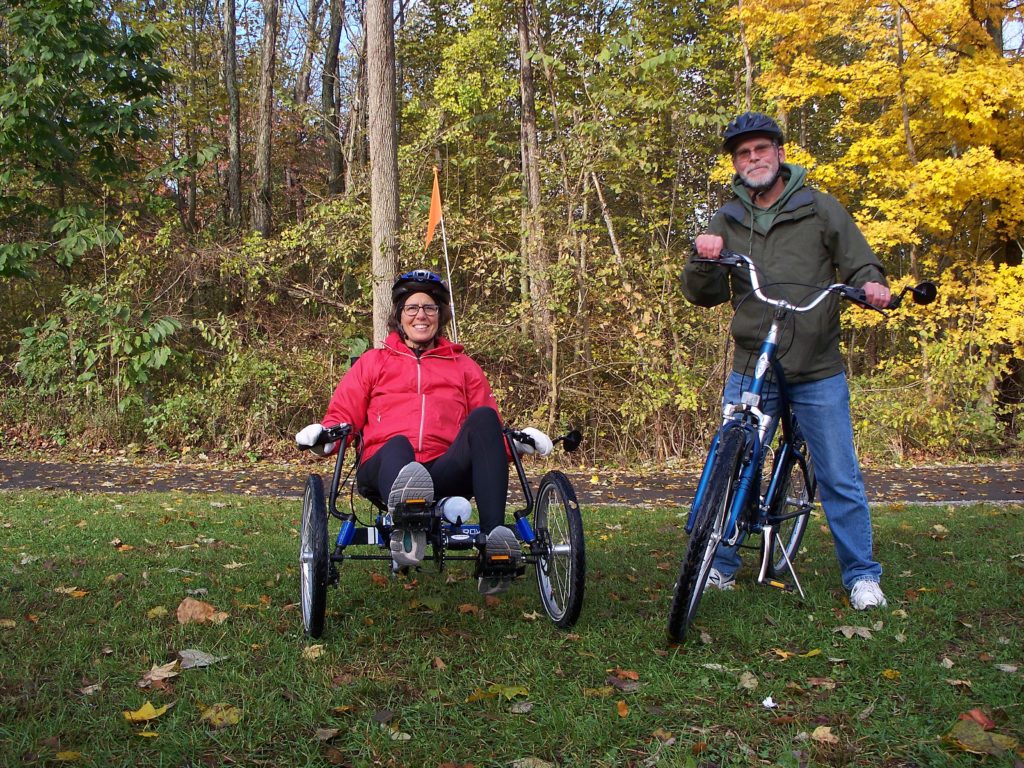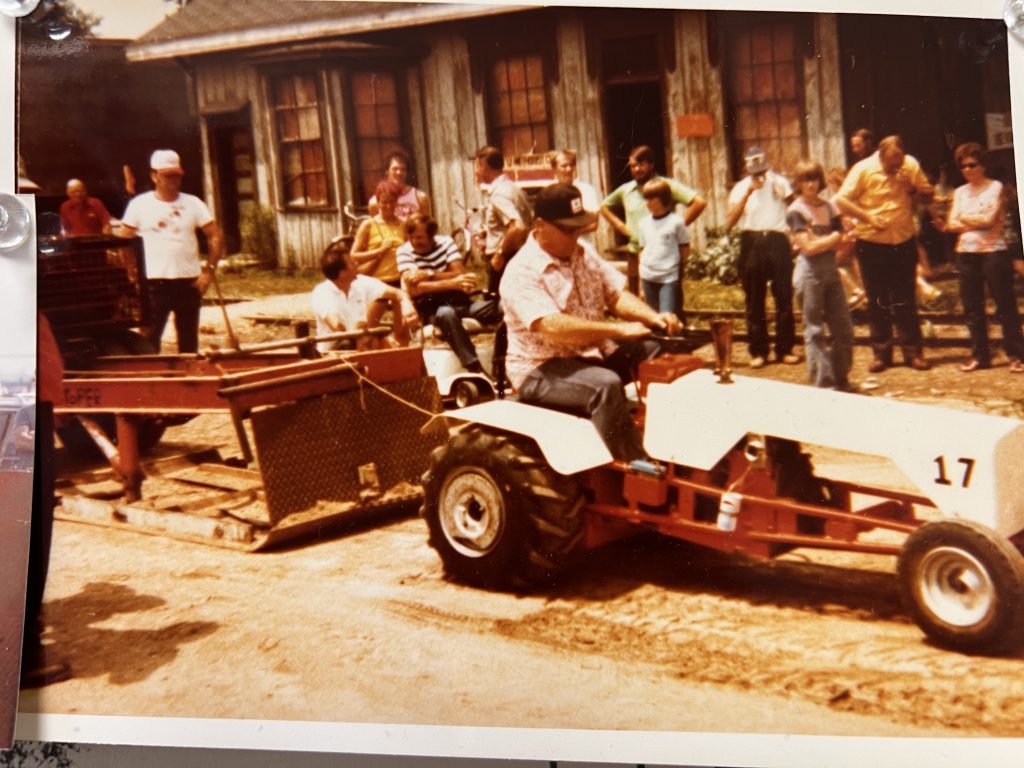What would it be like to have a rare disease that progressively inhibits your ability to walk, causes tremors, loss of balance, and difficulty speaking? Cheri Bearman of Hoagland, Indiana, knows the answer all too well: Ataxia.
“Ataxia has definitely taken a toll on me,” she says. A dozen dark memories cloud her eyes. “I’m not a person who likes to sit, but I’m probably going to end up in a wheelchair.”
Bearman, 62, suffers from spinocerebellar ataxia type 3 (SCA3), a degenerative neurological disease. In fact, three of her five siblings have it, too, passed on from her mother. Though the age when symptoms begin can vary, complications are often serious, debilitating, and life-shortening. There is no cure.


Ataxia breakdown
As many as 150,000 people in the U.S. are affected by ataxia, and each child of an affected parent has a 50% chance of inheriting the disease. One of Bearman’s three children began experiencing symptoms at age 33 and recently tested positive, but due to insurance complications, it is common to forgo the test.
“I am still able to walk unassisted for the most part, but I am becoming more and more unstable,” Bearman says. “I was always very active, athletic, coordinated, and agile, so as the disorder progresses, it’s becoming more and more difficult for me to do the things I have always enjoyed.”
From runner to chair yoga
For Bearman, the change was gradual, starting in her early 50s. A hardcore athlete, she ran and biked long distances, did yoga, and loved soaking up nature. But as the disease progressed, she was soon unable to run — just walking alone required trekking poles for stability. Traditional two-wheel cycling wasn’t an option either; she now rides a TerraTrike, an eight-speed recumbent tricycle, to avoid the danger of falling while stopping or starting.

Because of her increasing lack of balance, she can no longer perform her favorite yoga poses; chair yoga is now part of her routine. She also suffers from double vision, experiences muscle weakness and severe overall fatigue, and has severe neuropathy in her feet and legs that interrupts sleep.
Ataxia coping mechanisms…and Cheri’s “why”
She’s tried chiropractic treatments, acupuncture, medications, and massage therapy. But nothing has seemed to help.
“In public, I seem very positive, but at home, my worst side comes out,” she says. “I used to be able to clean my house in one day, but now, it takes a day to clean one room. It’s very frustrating. You vent, you yell, and you ask ‘why?’ But I have to be a rock for my children and grandchildren. I have to be strong.”
Pushing forward despite the odds
What Bearman has accomplished is incredible. In 2014, she started an ataxia support group in Indiana and got involved with the National Ataxia Foundation, helping with their quarterly magazine, Generations, to spread awareness. Once a year, she sees her neurologist at the University of Michigan in Ann Arbor and participates in various ataxia research studies involving MRIs, lumbar punctures, blood draws, and skin biopsies.
When her ataxic gait (“walking like you’re drunk”) feels overwhelming, the dizzying sensation takes over, or she remembers she can’t drive at night, it’s easy to become discouraged.
But three little M’s (mindfulness, meditation, and movement) and F’s (faith, family, and friends) keep her motivated. She’s determined to live a “glass half full” lifestyle.
“I’m known as the card lady because I like to inspire others. I send people Bible verses and inspirational quotes … I need to remember to take that to heart myself,” Bearman says. “I know there are a lot of worse diseases than ataxia. Though there is no cure or treatment presently, experts agree the best thing to do is to keep moving.”
Support the movement: The Fort Wayne Walk N Roll to Cure Ataxia
And move she does. The Fort Wayne Walk n’ Roll to Cure Ataxia — an annual fundraiser and two-mile walk — is a large part of her life. Currently, there are 17 Walk n’ Roll events nationwide that have collectively raised more than three million dollars for ataxia research and support. This year’s Rock n’ Roll is Oct. 5, 2019, at Foster Park in Fort Wayne.
Bearman’s husband, Gil, has been by her side through it all. He helps with endless encouragement, makes sure their scenic rural property is well-kept, installs railings around their home, and fights for continued ataxia research.
“Cheri isn’t a quitter,” Gil says. “She doesn’t back away from a challenge. She knows what’s ahead from watching her own mother, but she’ll keep pushing on. She’s going to walk as long as she possibly can.”
Cheri’s favorite quote sums it up perfectly:
“Be like a lion, going forward with slow, gentle, and firm steps.”
– Thich Nhat Hanh
Rather than focusing on what’s missing, she finds joy in discovering what’s been there all along.
How you can help find a cure
International Ataxia Awareness Day is Sept. 25. This year, the Fort Wayne Walk n’ Roll at Foster Park (http://www.ataxia.org/WalkFW) was canceled due to COVID-19. However, the National Ataxia Foundation is holding a Virtual Walk n’ Roll for a Cure event on Saturday, Oct. 3, 2020.
You can donate to Cheri’s research fundraising page here, or register for the Virtual Walk N Roll event to raise awareness for this disease: https://app.mobilecause.com/vf/NAFLIVE/CheriBearman
Questions? Call/text Cheri at 260-452-6231.
The Bearman’s 2020 goal? To raise $5,000 for ataxia awareness, support, and research. Let’s help them do it!

Looking for another way to help?
Since Cheri is known as “the card lady” and often encourages others, I’m asking YOU to empower her as well by writing a card or letter of encouragement. Please mail your cards to the address below, then I’ll pass them along to Cheri.
Samantha Kuhn
PO Box 7
Sherwood, Ohio 43556







